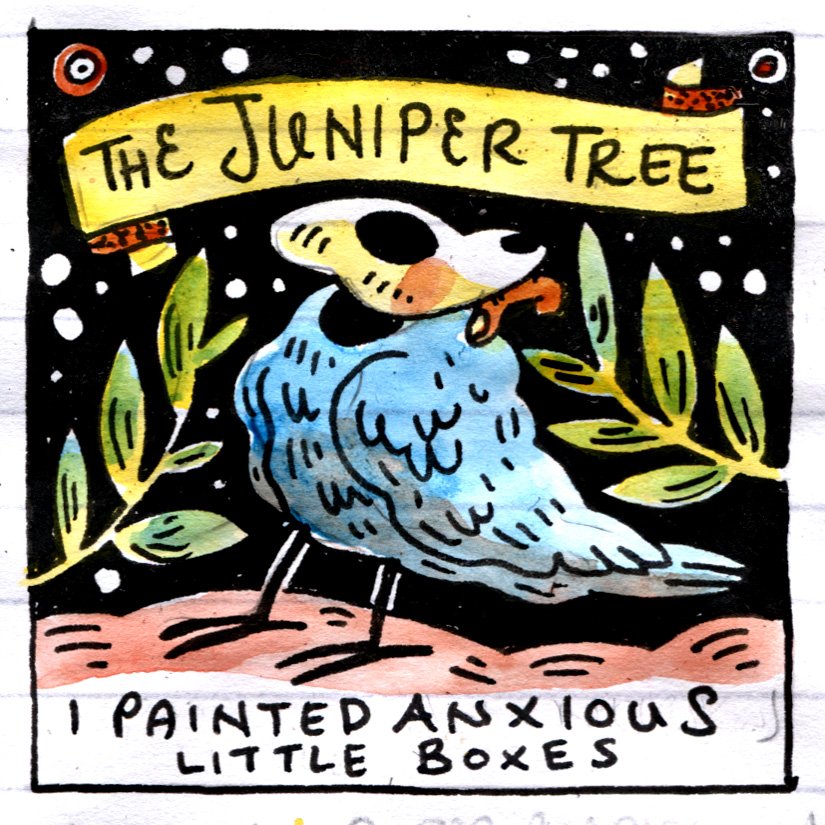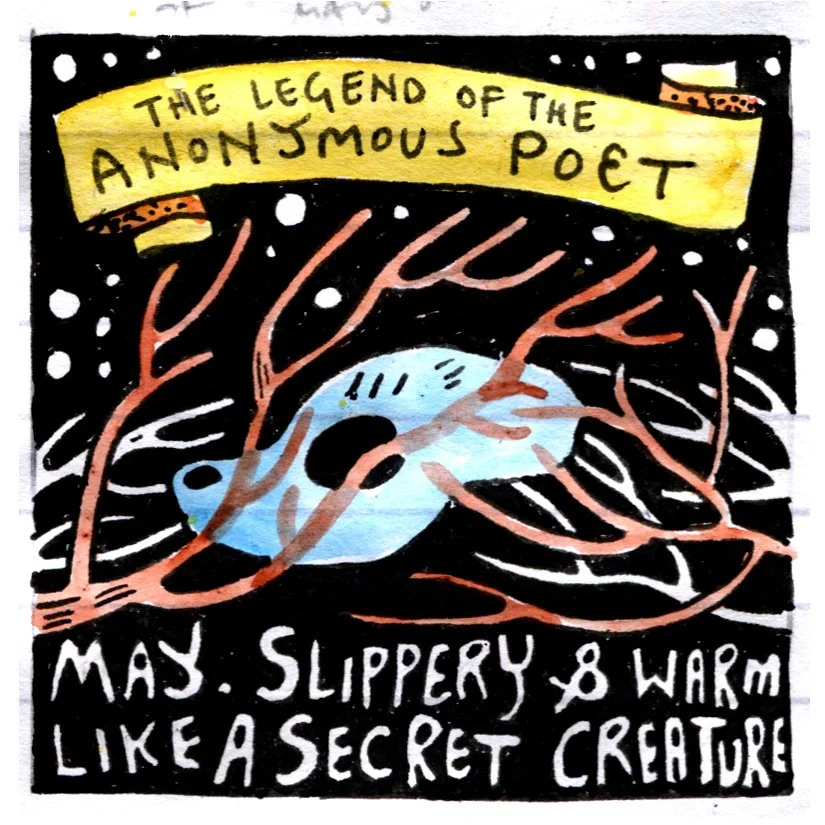Goblin Library Dispatch May 2025
May. You were the Folk Film Gathering month…
This festival, run by Transgressive North, was a global feast of folk film offerings. The first thing we caught was O’r Ddaear Hen (Wil Aaron, 1981, Wales). The screening was introduced with a short performance by harpist and singer Gwen Mairi York. Described as the first horror film in the Welsh language, this was everything I look for in British folk horror. Old gods, haunting and lonely rurality and ultimately the punishment of the modern people who can’t leave well alone.
The unease this film inspired in me is reminiscent of the old Channel 4 shorts and 1970s TV series like Beasts or A Ghost Story for Christmas. Does anyone else remember the short film about the man who gets his foot caught in a hole at the side of the road? I have never stopped thinking about it. The most exciting thing is the way O’r Ddaear Hen shifted the direction of my new graphic novel.
Keep an eye out for little scraps of this as the book progresses!
This was the second time I’d seen The Juniper Tree (1990, Nietzchka Keene) and, again, it left me feeling a little cold. I wonder if the film would have the same longevity and notoriety if it didn’t feature a young Bjork. I love the landscape, the sisters’ relationship and the darkness in the tale itself, but the black and white flattens the image somewhat and I think the story relies too heavily on the recounting the source fable at the end.
I am still working on the commission for Bob/Ace Records. Painting existential anxiety into the American Dream seems very apt at the moment. I feel like the project should have been finished in May but the month moved in time jumps and pauses that made my head float free of my body. Everything is set for the final painting but my hands haven’t quite reached it yet.
Hopefully later this year I’ll be able to share the finished product with you all.
The Nouba of the Women of Mount Chinoua, (1977, Assia Djebar) is the reason I love festivals so. I may have lived a long life without having seen this film and that life would have been poorer for it. The imagery, the colours, the sound, were all mesmerising. The intricate weaving of documentary, fiction and folk tales was masterful.
In other worlds of multi-layered wonder, I finally had a wee breakthrough with how I thought about Riso printing. It is somewhat in vogue right now, but friends, especially zinesters and small comic pressers I know, have been using it for a very long time. I had a second commission this month with the wonderful Lavender Menace. It’s another adventure in Riso and while working on it, my rigid brain finally let in the soft, subtleties of how the process reads the ink, dissolving the anxiety I have previously felt with this medium.
I haven’t looked for it yet, but if anyone has leads on a queer reading of Ila Ayn (1957, George Nasser) then send it my way. A tale of two brothers. One who stays to work the land after their father leaves to chase the American Dream. The other, whose brother’s toil enables him to get an education, leaving him restless and unsatisfied with village life. This simply told and quietly observed drama was steeped in a gay subtext that added a wonderfully complex undertone to the film.
Since it’s reestablishment as a queer library and archive, The Lavender Menace has become a treasure trove of LGBTQ+ writing, art and ephemera. I was lucky enough to be invited to host a zine workshop there back in January. Then, at the beginning of the month, my partner and I began volunteering with them, founding the Lavender Drawing Board with fellow Menace Zoe Robertson. It is an oasis, and I feel lucky that it found me.
The screening of Fertile Memory (1980, Michel Khleifi) was introduced by Palestinian poet and dancer Nada Shewar and followed by a Q & A with Falastin Film Festival’s Nehad Khader. I’m going to write a longer comic about it soon, but to see this film during the current annihilation of Gaza and the Palestinian genocide, made it feel as though forty years was ten lifetimes ago.
Nehad Khader said that they couldn’t have foreseen the how meticulously and technologically proficient in cruelty the IDF would become. Engaging with Palestinian artists, writers and film makers has been a way of bearing witness without being completely overwhelmed. The Palestinian Film Institute has weekly free films available on it’s website if you too are so inclined.
The Legend of the Anonymous Poet was a live performance by Moroccan film makers/story tellers Nadir Bouhmouch and Soumeya Ait Ahmed. It was an interesting and complex example of post-colonial storytelling. While it left me wanting a little more integration between the performers and the film, I don’t know that I would have been exposed to it’s incredible field recordings of ancestral oral poems, epic ballads and women’s work songs in any other place.
May was interminably long and shorter than a gasp. It was a month of commissions, writing and mad adventures in film. I wonder what shape June will be?
Thank you, as always, for coming with me.
Until next time,
Goblin Out.







